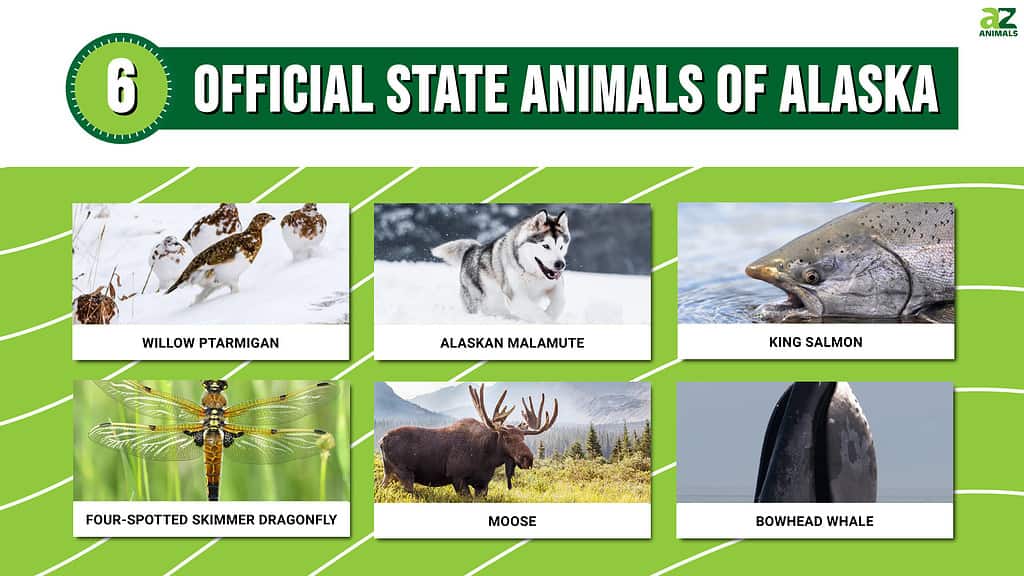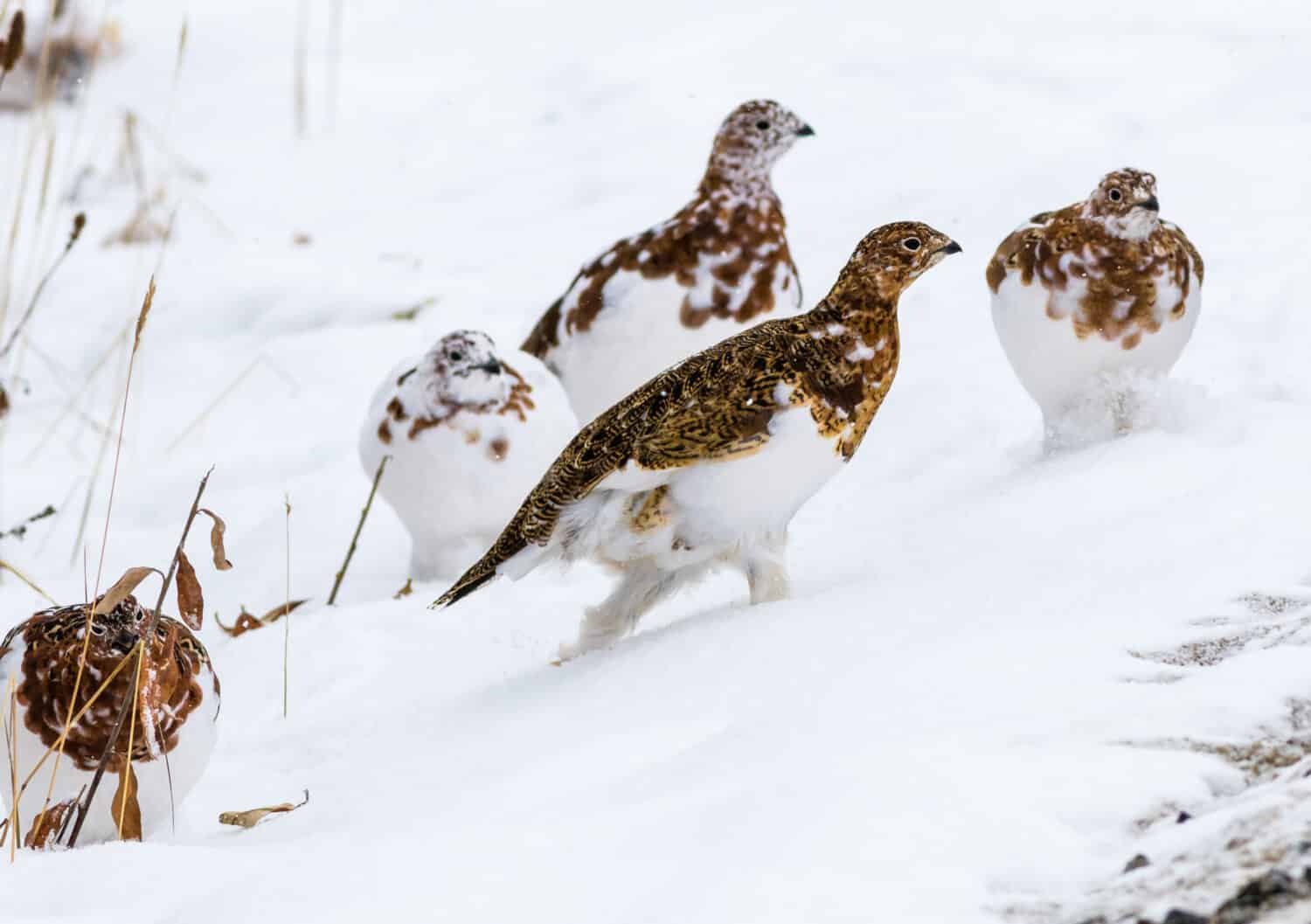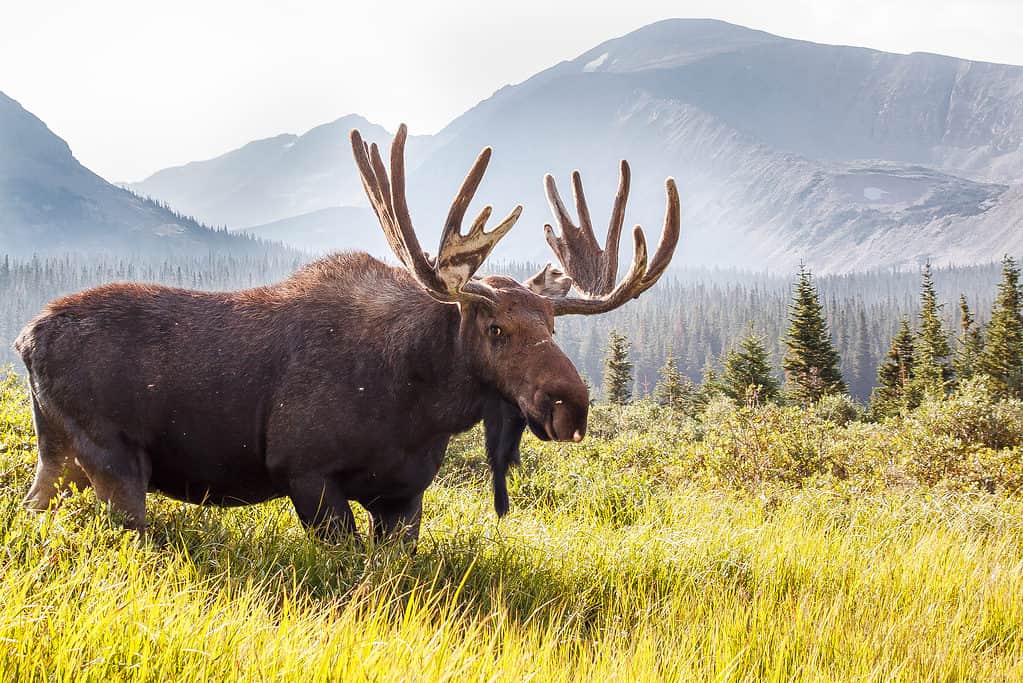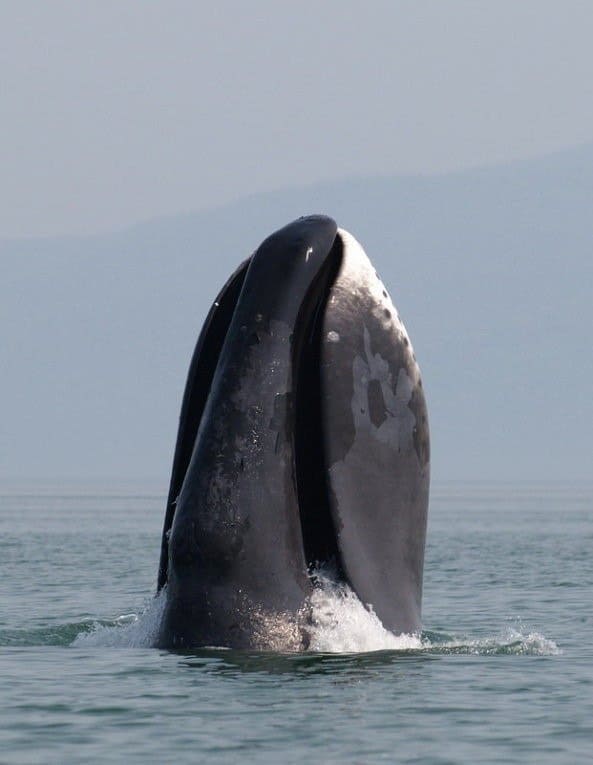Alaska is a state located in the northwest region of the United States, bordered by Canada to the east and Russia across the Bering Strait to the west. It is known for its vast wilderness areas, including glaciers, mountains, forests, and tundras. With a land area of over 663 thousand square miles, it is larger than Texas, California, and Montana combined.

The population of Alaska stands at just over 731 thousand people as of 2020, according to estimates from the US Census Bureau – making it one of the least densely populated states in America. The largest city in Alaska is Anchorage, with a population exceeding 290 thousand residents.
Alaska has an extensive coastline stretching approximately 6,640 miles that includes numerous islands, such as Kodiak Island, which spans an area roughly equivalent to Connecticut.
Overall, Alaska offers visitors breathtaking scenery with opportunities for outdoor activities like hiking, fishing, kayaking, skiing, snowboarding, and camping!
State Bird

The Willow ptarmigan eats seeds and berries in Alaska.
©Troutnut/Shutterstock.com
The Willow ptarmigan, also known as the willow grouse, is a medium-sized bird that belongs to the grouse family. It was designated as the official state bird of Alaska in 1955 due to its significance in Alaska’s culture and history.
The Willow ptarmigan is found throughout Alaska, inhabiting areas such as tundra and boreal forests. They are well-adapted to living in harsh environments and can camouflage effectively with their surroundings during winter months when their feathers turn white.
These birds feed on buds, leaves, berries, insects, and seeds. During the breeding season (March-August), male Willow ptarmigans attract females by displaying their bright red eyebrows and making a distinct “tuck-tuck” sound.
In addition to being an important part of Alaskan culture, these birds play a crucial role in maintaining ecological balance within their respective ecosystems. As prey animals for predators like foxes and eagles, they help regulate populations of these larger species.
Overall, the designation of the Willow ptarmigan as Alaska’s official state bird serves not only as recognition for this unique species but also highlights the importance of conservation efforts needed to protect it from environmental threats such as habitat loss or climate change.
State Dog

Alaskan Malamute loves the snowy state of Alaska.
©Aneta Jungerova/Shutterstock.com
The Alaskan Malamute was voted the state dog of Alaska in 2010. It is a large and powerful breed of dog that was originally bred by the Inuit people of Alaska for use as a sled dog. They are known for their thick, double coat, which provides insulation against harsh Arctic weather conditions, and their strong build, which enables them to pull heavy loads over long distances.
In addition to their physical traits, Alaskan Malamutes are also highly intelligent and have a friendly and affectionate temperament. They make great family pets but require regular exercise and plenty of room to run around due to their energetic nature.
As one of the official state dogs of Alaska, the Alaskan Malamute holds a special place in the hearts of many residents. Despite being bred for work purposes, they have become beloved companions and symbols of strength and resilience in this rugged northern state.
State Fish

The king salmon is a large fish native to Alaska.
©Dec Hogan/Shutterstock.com
The state fish of Alaska is King Salmon. The king salmon, also known as Chinook salmon, is a species of fish found in the Pacific Ocean and rivers along the coast of Alaska. They are one of the most popular sport fish in North America due to their size and strength.
King salmon have a distinctive appearance with bright silver sides and subtle spots on their back. As they approach the spawning season, males develop a hooked jaw called a kype which gives them an even more distinct look. These fish can grow up to 58 inches long and weigh over 100 pounds!
In terms of diet, king salmon feed on small crustaceans like krill when they are young but switch to larger prey such as squid and herring as they grow older. During their freshwater stage (when they spawn), king salmon do not eat at all.
King salmon return upstream to spawn in freshwater streams during summer months, where females lay eggs that hatch into fry after several weeks. After hatching, juveniles will spend anywhere from one to three years in freshwater before migrating downstream toward saltwater.
These fish prefer cold ocean waters (between 44-54°F) but can tolerate temperatures outside this range for short periods of time if necessary. They are mostly found near coasts or river mouths where there is high food availability.
Overall, the king salmon is an iconic species that plays an important role both ecologically and economically throughout Alaska’s coastal communities.
State Insect

Kids from an Elementary School in Aniak, Alaska, helped the four-spotted dragonfly become the state insect of Alaska.
©Hector Ruiz Villar/Shutterstock.com
The four-spot skimmer dragonfly is a fascinating creature that has been designated as the official state insect of Alaska since 1995. These beautiful insects are known for their distinctive appearance, which includes a bright blue-green body and wings with dark spots near the tips.
In terms of diet, four-spot skimmer dragonflies are carnivorous and primarily feed on other insects such as mosquitoes, flies, and gnats. They can often be seen flying low over streams or ponds to hunt for prey.
When it comes to habitat, these dragonflies prefer freshwater environments such as lakes, rivers, and marshes. They require clean water with plenty of vegetation for breeding and feeding purposes.
As far as reproduction goes, female four-spot skimmers lay their eggs in aquatic vegetation or directly into the water itself. The larvae then develop in the water until they eventually emerge as adult dragonflies after several months.
Overall, the four-spot skimmer dragonfly is an important part of Alaska’s natural ecosystem and serves as a symbol of the state’s commitment to preserving its unique wildlife.
State Land Mammal

The mighty moose is the state animal of Alaska.
©Michael Liggett/Shutterstock.com
The mighty moose is the state land animal of Alaska and for a good reason. The moose is a large land mammal that can be found throughout Alaska and other parts of North America. These majestic animals can grow up to 6 feet tall at the shoulder and weigh as much as 1,500 pounds. Their distinctive features include their long legs, broad noses, and antlers which are unique to males.
Moose primarily feed on leaves, twigs, bark, and aquatic plants like water lilies. They are herbivorous animals that need a lot of food to fuel their massive bodies. Moose typically live in forested areas near streams or lakes where they have access to plenty of vegetation.
Mating season for moose occurs during the fall when males will compete for females by fighting with their antlers. Once pregnant, female moose carry their young for around eight months before giving birth in late spring or early summer.
One interesting fact about moose reproduction is that twins are uncommon but not unheard of in this species – although it’s more common for only one calf to be born at a time. The newborn calf weighs around 30-35 pounds and will remain with its mother until it’s old enough to survive on its own.
In summary, the moose is an impressive creature known for its size and strength. Its diet consists mainly of vegetation found near water sources, while its habitat includes forests along rivers or lakeshores across Alaska’s beautiful landscape!
State Marine Mammal

A bowhead whale can weigh up to 75 tons!
©Olga Shpak / CC BY-SA 3.0, via Wikimedia Commons – License
The state marine mammal of Alaska is the Bowhead whale. The Bowhead whale, also known as the Arctic whale or Greenland right whale, is a species of marine mammal that inhabits the cold waters of the Arctic and subarctic regions. They are one of the largest animals in existence, with adults reaching lengths up to 60 feet and weighing over 75 tons.
Bowhead whales have a distinct physical appearance characterized by their massive heads shaped like an arch and their black skin. Their lower jaw is longer than their upper jaw, which gives them an almost comical expression when viewed from straight on. Their diet consists primarily of small crustaceans such as copepods, but they will also feed on krill and other zooplankton.
These mammals are well adapted to living in icy habitats where they migrate thousands of miles each year between feeding grounds near Alaska’s North Slope and wintering areas off Baja California. During summer months, bowheads can be found in shallow coastal waters, while during winter migration; they tend to move into deeper offshore waters where food sources may be more abundant.
Bowheads typically mate during late winter or early spring after migrating to warmer waters for breeding purposes. Females give birth around every three years, with gestation lasting approximately fourteen months before giving birth to calves measuring about thirteen feet long at birth.
Overall, these majestic creatures play a vital role within Alaskan culture as well as our global ecosystem due to their important role in maintaining healthy ocean populations through ecological functions such as nutrient cycling.
Summary of the 6 Official State Animals of Alaska
| Title | Animal | |
|---|---|---|
| 1 | State Bird | Willow Ptarmigan |
| 2 | State Dog | Alaskan Malamute |
| 3 | State Fish | King Salmon |
| 4 | State Insect | Four-spotted Dragonfly |
| 5 | State Land Mammal | Moose |
| 6 | State Marine Mammal | Bowhead Whale |
The photo featured at the top of this post is © NOAA Photo Library / public domain – License / Original
Thank you for reading! Have some feedback for us? Contact the AZ Animals editorial team.






